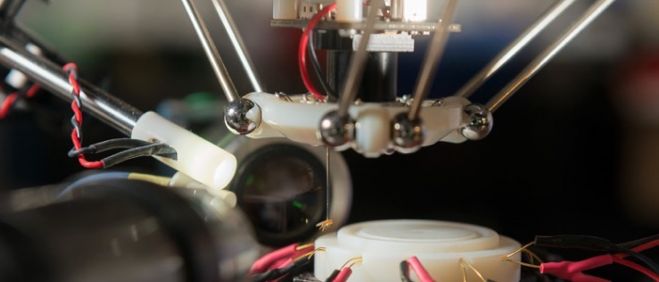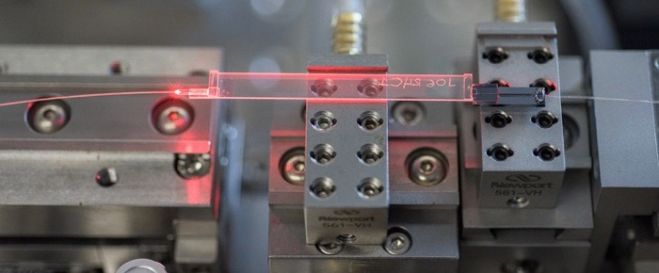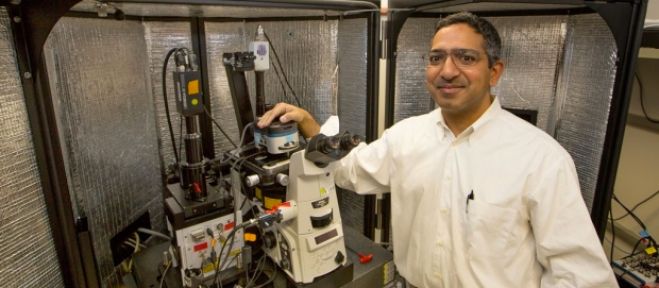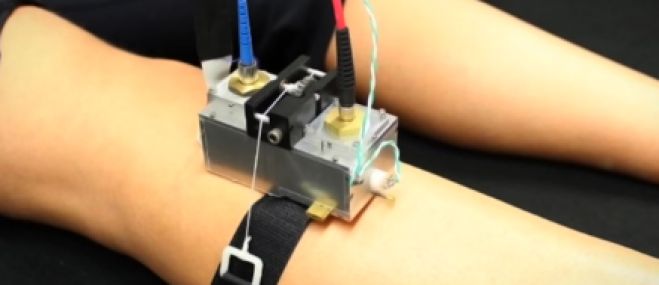 A fruit fly hangs unharmed at the end of the robot's suction tube. The robot uses machine vision to inspect and analyze the captured fly. (Photo: L.A. Cicero/Stanford News)
A fruit fly hangs unharmed at the end of the robot's suction tube. The robot uses machine vision to inspect and analyze the captured fly. (Photo: L.A. Cicero/Stanford News)
Dexterous robotic manipulation of alert adult Drosophila for high-content experimentation
A new lab robot is an example of how clever robotics might speed research and open new fields of study. Stanford News reports on a team of bioengineering scientists that have created a robot with excellent "hand-eye coordination" that can visually inspect active flies and carry out behavioral experiments.




